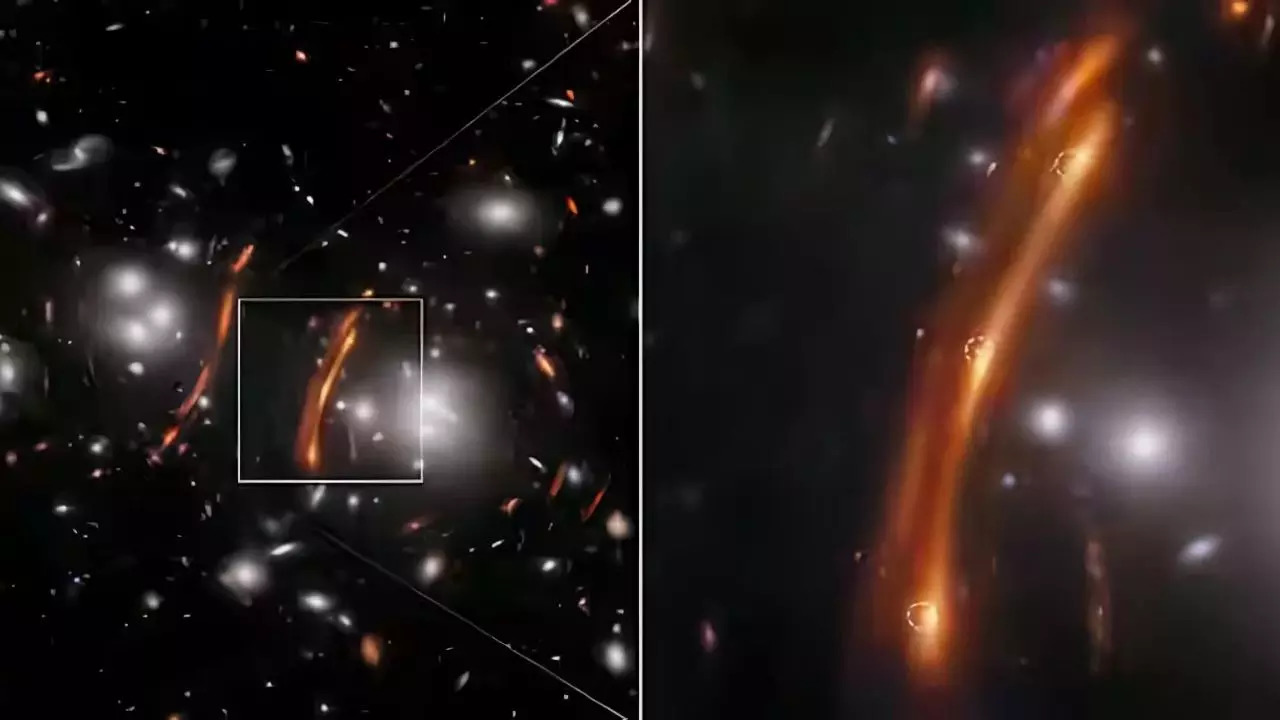Image from the James Webb Space Telescope: NASA
He James Webb Space Telescope (JWST) has made an extraordinary discovery, capturing a supernova Appearing three times in one image due to a phenomenon known as gravitational lensing. This effect, caused by massive cosmic structures such as galaxy clusters or black holes, bends light from distant objects, allowing them to be seen more clearly from Earth. Gravitational lenses magnify distant celestial bodies, allowing astronomers to observe events that would otherwise remain invisible.
In this particular case, a galaxy cluster in the Ursa Major constellation, called PLCK G165.7+67.0 (or G165), acted as a gravitational lens. The galaxy cluster’s intense gravitational field deflected and magnified the light from a distant supernova, resulting in the remarkable observation of the same explosion three times in a single image. The supernova was located far beyond the galaxy cluster, offering a glimpse into the universe’s distant past.
The phenomenon occurred because light from the supernova traveled three different paths through space before reaching Earth. Each path had a different distance and time delay, allowing JWST to capture the same explosion at three different stages. JWST’s Near Infrared Camera (NIRCam) observed this cosmic event between March and May last year.
Astronomer Brenda Frye compared this gravitational lensing effect to a triple mirror, where each mirror reflects the supernova at different times during its explosion. In the image, the gravitational pull of the galaxy cluster distorted the light from the supernova, creating an arc-shaped structure that showed three bright spots, each representing the same explosion seen through a different path.
This discovery represents a great advance in the study of supernovae and gravitational lensing. The observations provide critical information about the behavior of light in the presence of massive gravitational fields, as well as the structure of the universe. Although only parts of the research have been published, a more detailed paper is expected soon on the arXiv preprint server. Scientists are eager to explore the broader implications of this unique cosmic event.
Disclaimer:
The information contained in this post is for general information purposes only. We make no representations or warranties of any kind, express or implied, about the completeness, accuracy, reliability, suitability or availability with respect to the website or the information, products, services, or related graphics contained on the post for any purpose.
We respect the intellectual property rights of content creators. If you are the owner of any material featured on our website and have concerns about its use, please contact us. We are committed to addressing any copyright issues promptly and will remove any material within 2 days of receiving a request from the rightful owner.

